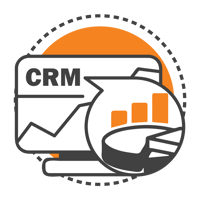Customer Relationship Management (CRM) has been a vital tool for businesses for decades, helping...
Do you know these types of CRM?
Currently, companies face the challenge of staying competitive in an increasingly demanding and changing market. To achieve this, many have opted to implement Customer Relationship Management (CRM) strategies focused on improving customer relationships and promoting loyalty.
Technology has played a fundamental role in the evolution of CRM, transforming them into more efficient and personalized tools. With the development of new technologies such as Big Data, Artificial Intelligence (AI), and Machine Learning, CRMs have evolved to offer more advanced data analysis and enable increasingly precise personalization of the customer experience. Want to know more about this topic? We invite you to read our full article on Linkedin. Click here.
Globally, the CRM market is led by Salesforce, Pega, Microsoft, SAP, Oracle, and Adobe. However, we are in a moment of maximum digital transformation with all kinds of new options and typologies, ready to challenge the big five and offer very different products. But it is essential to know that there are several types of CRM, each with its own characteristics and benefits. In this article, we will analyze the different types of CRM and provide some statistics on their use.
- Operational CRM focuses on automating sales, marketing, and customer service processes. This type of CRM allows companies to manage daily interactions with customers, from lead capture to customer service case management. According to a report by Grand View Research, the global operational CRM market is expected to reach $26.5 billion by 2025, with a compound annual growth rate of 14.2%.
- Analytical CRM focuses on data analysis and reporting. This type of CRM allows companies to collect and analyze information about their customers and their interactions with them to better understand their needs and behaviors. According to a study by Aberdeen Group, companies using analytical CRM see a 29% improvement in response time to customers and a 25% improvement in customer retention rate.
- Collaborative CRM. focuses on internal and external collaboration. This type of CRM allows companies to work together to provide a more personalized customer experience. According to a Harvard Business Review study, teams that collaborate effectively are 50% more likely to have higher profitability and 33% more likely to be market leaders.
- Social CRM. focuses on social media management and online reputation monitoring. This type of CRM allows companies to listen to what customers say about them on social media and respond to their needs in a timely manner. According to a Zion Market Research report, the global social CRM market is expected to reach $10.9 billion by 2025, with a compound annual growth rate of 17.6%.
Each type of CRM has its own characteristics and benefits. The use of a CRM system can help companies improve customer relationships, increase efficiency and effectiveness of business operations, maximize long-term customer profitability and satisfaction, and improve the quality of customer service. Ultimately, the choice of CRM type will depend on each company’s specific needs and industry.
If you still don’t know which CRM is right for you, at Quaxar we can advise you on the best strategy for you and your business, so don’t hesitate to contact us.




